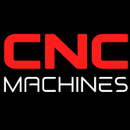How American Manufacturers Are Competing with China

How American Manufacturers Are Competing with China
American manufacturing is undergoing a significant transformation to compete with China's dominance in the global market. By embracing automation, reshoring production, and leveraging strategic innovations, U.S. manufacturers aim to enhance competitiveness and resilience.
1. Embracing Automation and Advanced Manufacturing
To offset higher labor costs and improve efficiency, U.S. manufacturers are investing in automation technologies. This includes robotics, AI-driven systems, and smart manufacturing processes that increase productivity and reduce reliance on manual labor. Such advancements are crucial for maintaining competitiveness against China's large-scale, low-cost production capabilities.
2. Reshoring and Supply Chain Diversification
The COVID-19 pandemic and geopolitical tensions have highlighted the risks of overreliance on overseas manufacturing. In response, many U.S. companies are reshoring operations to bring production closer to home. This move enhances supply chain resilience, reduces lead times, and aligns with national interests in securing critical industries.
3. Strategic Use of Tariffs and Trade Policies
Tariffs on imported goods, particularly from China, have been employed to level the playing field for domestic manufacturers. While these measures can increase costs for some businesses, they also incentivize local production and investment in U.S. manufacturing infrastructure.
4. Investing in Workforce Development
A skilled workforce is essential for advanced manufacturing. U.S. initiatives focus on training programs, apprenticeships, and partnerships between industry and educational institutions to equip workers with the necessary skills for modern manufacturing roles. This investment in human capital is vital for sustaining growth and innovation.
5. Leveraging Total Cost of Ownership (TCO) Analysis
Beyond initial production costs, U.S. manufacturers are adopting TCO analysis to assess the full economic impact of manufacturing decisions. This comprehensive approach considers factors like transportation, quality control, and inventory management, often revealing that domestic production can be more cost-effective in the long term.
Conclusion
Through strategic investments in automation, reshoring, workforce development, and comprehensive cost analysis, American manufacturers are actively enhancing their global competitiveness. These efforts aim to create a more resilient and innovative manufacturing sector capable of meeting the challenges posed by China's manufacturing prowess.


